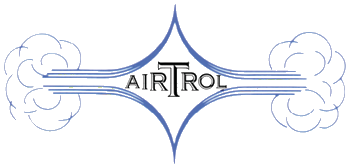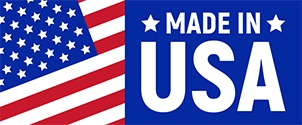How Check Valves Work
Check valves—also referred to as non-return, one-way, or clack valves—are valves designed to allow for unidirectional fluid flow. They are employed in a wide range of fluid handling systems as a preventative measure against backflow, overflow, and other unsafe operating conditions. The following article provides an overview of these valves, including how they work, typical applications, types available, selection and installation considerations, and common problems.
How Does a Check Valve Work?
Check valves feature a two-port system design—two ports separated by a regulating mechanism (i.e., clapper). Fluid enters through an opening of the valve into the first port. As it flows from the first port to the second port, the clapper prevents it from flowing backward. This valve design facilitates operation without human involvement as it relies on the pressure of the fluid flow to open and close the valve. For most check valves, the minimum upstream pressure required—i.e., the cracking pressure—is between 1–5 psi.
Applications of Check Valves
Check valves find application in many different industrial equipment and systems, including the following:
- Irrigation systems
- Oil and gas extraction and processing equipment
- Potable water systems
- Standard and critical power generation and distribution equipment
- Subsea operation systems
- Wastewater treatment facilities
They are available in many variations to suit use in these different situations.
Types of Check Valves
Check valves come in many designs, each of which employs the same basic operating principles. They generally vary in regard to the control element’s shape and structure, with the name of the check valve serving as a good indicator of what they are. Some of the types available include:
- Axial flow check valves—also called nozzle check valves—feature a spring-loaded disc that remains closed below the cracking pressure but completely open as soon as it is reached. They are ideal for maintaining continuous flow at minimum pressures and eliminating the effects of water hammer.
- Ball check valves employ a spherical ball-shaped clapper that, depending on the application, may or may not be spring-loaded. They should be placed in easy-to-reach areas for regular maintenance and repair.
- Diaphragm check valves contain a rubber diaphragm clapper that opens when upstream pressure exceeds downstream pressure and closes when the pressures are equal or fall below a set standard.
- Duckbill check valves have flow control elements that are shaped like a duck’s bill. While upstream flow causes them to open, downstream flow prompts them to close.
- Stop check valves use an additional external control mechanism—e.g., an actuator, handwheel, or level—that allows industry professionals to stop valve operation as needed, regardless of flow pressure.
- Swing check valves—also known as tilting-disc check valves—consist of a hinged clapper that swings open towards the outlet port.
Check Valve Selection and Installation Considerations
When selecting a check valve for a system, there are several factors to keep in mind to ensure the valve operates as intended, such as:
- Application data (e.g., flow, design/operating conditions)
- End connections
- Envelope dimensions
- Leakage requirements
- Line sizes
- Material compatibility with the medium
- Special operating and maintenance requirements
- Valve rating (ANSI)
Similarly, when installing the chosen check valve into the system, industry professionals should consider the following factors to guarantee it functions correctly:
- Is the valve positioned correctly in regard to fluid flow?
- Is the placement of the valve going to interfere with the operation of other system components?
Common Check Valve Problems
Two of the most common problems associated with check valves are:
- Reverse flow: when water reverses direction and returns downstream
- Water hammer: when fluid suddenly stops or changes direction (e.g., reverses flow) causing a pressure surge or shock wave
Both problems generally occur because of improper sizing or selection of the check valve(s) employed. As such, it is important to keep in mind the above considerations when choosing one for a particular system.
Contact the Valve Experts at Airtrol Components Inc. Today
Founded in 1977, Airtrol Components Inc. is a family-owned and -operated company specializing in the supply of precision miniature pneumatic components suitable for use in light-duty to medium-duty applications. One of our newest product lines is check valves. For additional information about our valve offerings or assistance choosing one for your application, contact us today.

